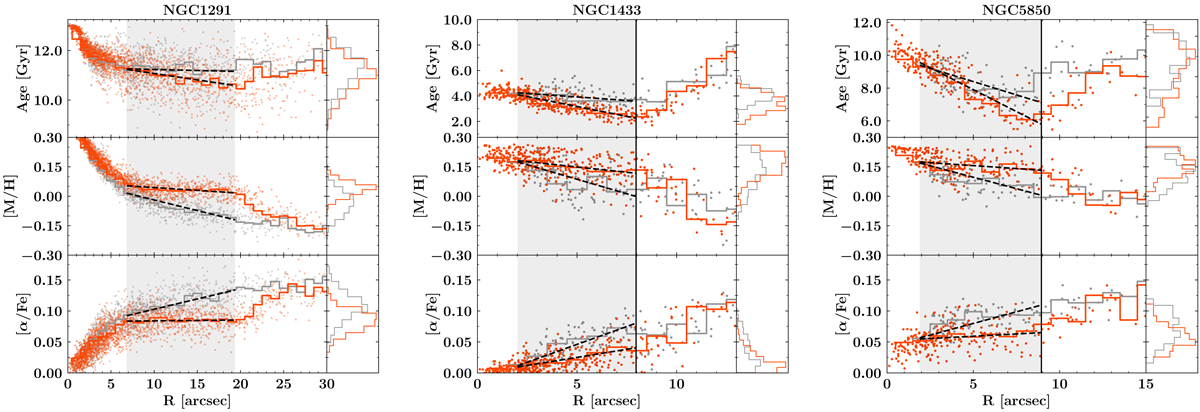Fig. 3.

Radial profiles of ages (upper panels), metallicities (central panels), and [α/Fe] abundances (lower panels) as a function of the galactocentric radius. The profiles have been deprojected using inclinations and position angles derived in S4G, as presented in Table 1. Profiles along and perpendicular to the major axis of the inner bar are displayed in orange and grey, respectively. To better highlight the radial trends, we also plot the median population properties in bins of 1 arcsec (solid lines). Shaded regions highlight the radial range of the inner bars, i.e. for NGC 1291 and NGC 5850 the range between the inner bar minor and major axis radius, calculated using the inner bar radius from Herrera-Endoqui et al. (2015) and ellipticity from de Lorenzo-Cáceres et al. (2019). Since the inner bar properties of NGC 1433 are not constrained by photometric studies, we highlight the radial range between 2 arcsec (in order to approximately exclude the range in which both the minor and major axis profiles probe the inner bar) and the kinematic radius of the nuclear disc from Gadotti et al. (2020). Dashed lines show linear fits to the population profiles within the radial range of the inner bar. The histograms on the right display the distribution of stellar population properties in the inner bar major and minor axis, again within the radial range of the inner bar. The vertical solid lines represent the kinematic radii of the nuclear discs (Gadotti et al. 2020). We note that for NGC 1291 no kinematic radius could be determined, due to the face-on orientation of the galaxy.
Current usage metrics show cumulative count of Article Views (full-text article views including HTML views, PDF and ePub downloads, according to the available data) and Abstracts Views on Vision4Press platform.
Data correspond to usage on the plateform after 2015. The current usage metrics is available 48-96 hours after online publication and is updated daily on week days.
Initial download of the metrics may take a while.


